Robert Allan Ltd Designs ATB Convoys for Aliança Navegação e Logística
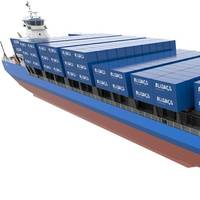
Canadian naval architecture and marine engineering firm Robert Allan Ltd. said it has been awarded a contract by Rio Maguari Shipyard (Estaleiro Rio Maguari – ERM), located in Belém, Brazil, to develop the design package for an innovative Articulated Tug and Barge (ATB) for shipping containers along the coast of Brazil. These two ATB convoys will be owned and operated by Aliança Navegação e Logística (ANL), a major logistics services provider in Latin America, and part of the Maersk Group.Robert Allan Ltd.’s engineering team…
Vessel Accident Causes Oil Spill near Port Arthur
Clean up efforts are underway after a vessel collision caused an oil spill near Port Arthur, Texas.The U.S. Coast Guard said an estimated 13,272 gallons of marine diesel fuel was discharged after an accident involving the towing vessel Savage Pathfinder and the motor vessel Endurance on Wednesday evening. No injuries were reported.Containment boom was placed around the vessel, and the source of the leak has been secured, the Coast Guard said.Coast Guard Marine Safety Unit Port Arthur and Texas General Land Office personnel are involved in the investigation and response efforts."We are working with TGLO, the responsible party and all maritime stakeholders to minimize impact as quickly as possible," said Capt.
LNG: Maritime's 'Fuel of the Future'
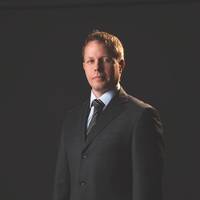
As the maritime world increasingly mulls alternative fuel and propulsion solutions, Maritime Reporter & Engineering News discusses the path ahead for (liquefied natural gas (LNG) with Timo Koponen, VP, Flow & Gas Solutions, Gas and LNG, Wärtsilä. The road toward acceptance of LNG as marine fuel has neither been short nor straight, but anyone who knows this market could not reasonably expect anything different. “Even though it (LNG) is very well proven both from the technology side and its benefit to the environment, nevertheless there are too many people who still doubt,” said Koponen.
Germany Orders LNG Fueled Research Ship
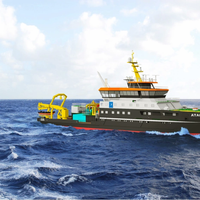
The Fassmer shipyard in Germany is currently cinstructing a new research vessel to be owned by Bundesamt für Seeschifffahrt und Hydrographie (BSH), the Federal Maritime and Hydrographic Agency. The new 75-meter-long ship, the Atair, will replace her 30 year old namesake, and will be the first German research vessel operating on liquefied natural gas (LNG) fuel. The engines for the new vessel will be supplied by Wärtsilä, who will also supply exhaust cleaning systems based on selective catalytic reduction (SCR) technology and the LNGPac system for complete fuel gas handling.
Wärtsilä to Power Mediterranean's First LNG Ferry

Wärtsilä said it has signed a contract with Construcciones Navales del Norte SL (LaNaval) shipyard in Sestao, Spain for the design and supply of the LNG power and propulsion installation for a new RoRo passenger ferry being built for Spanish owner Baleària, an operator serving the Balearic Islands. There is also an option for a second vessel. The contract, signed in August 2016, will also see Wärtsilä provide inclusive project support services to the yard, including integration engineering and on-site consulting, as well as commissioning of the combined systems.
Wärtsilä, Clean Marine Energy Offer "Scrubber Finance"
Wärtsilä and Clean Marine Energy (Europe) Ltd (CME) today announced the landmark signing of the shipping industry's first collaboration agreement that will provide a convenient funding solution to drive the uptake of exhaust gas cleaning technology. The move is intended to ease the financial burden on ship owners seeking to install scrubber systems in order to meet sulphur emissions legislation. The financing solution, similar to those prevalent and proven in the building environment space, enables a ship owner to repay the cost of the scrubber system installation via a fuel adder, i.e. a fuel premium on the price of HFO by which the ship owner repays the cost of installing the scrubber.
Kirby Reports Record Earnings
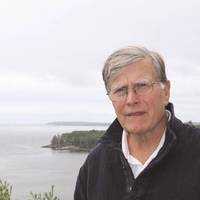
Kirby Corporation announced record net earnings of $68.1 million, or $1.19 per share, for the fourth quarter 2014 (ended December 31). The results bested 2013’s fourth quarter figures of $64.3 million, $1.13 per share. Consolidated revenues for the 2014 Q4 increased 18% to $668.3 million compared with $568.4 million for Q4 2013. Kirby also reported record net earnings for the 2014 year of $282 million, $4.93 per share, compared with $253.1 million, $4.44 per share, for 2013 which included a $0.20 per share benefit due to the reduction of the United earnout liability.
CMA CGM to Apply Low Sulfur Surcharge

CMA CGM said it will implement a low sulfur surcharge on all its trades in Emission Control Areas (ECAs) and for all cargos as of January 1, 2015. MARPOL Annex VI regulations for the prevention of air pollution from ships assign Sulfur Oxides (SOx) Emission Control Areas (ECA) with more stringent controls on sulfur emissions. Stricter regulations covering the sulfur content of fuel oil will be strengthened by local regulators in the European Union, U.S. and Canada. First implemented in the Baltic Sea more than 10 years ago…
MARAD Tests Alternative Power for Ships
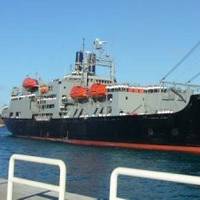
The Maritime Administration (MARAD) is testing state-of-the-art, environmentally efficient technology onboard the Training Ship (TS) Kennedy. The National Defense Reserve Fleet vessel was provided to the Massachusetts Maritime Academy by MARAD for Cadet training. This one-year undertaking is part of a MARAD initiative to test fuel cells as a source of power for shipboard electrical systems. Researchers will evaluate the performance of the fuel cell technology and how low sulfur marine diesel fuel can be used to efficiently power a fuel cell to produce auxiliary power.
Bulk Carriers to Adopt Wärtsilä Dual-Fuel Engine Technology
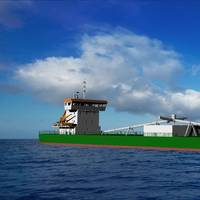
The increasing use of LNG as a marine fuel is further emphasized with the latest order for Wärtsilä's dual-fuel engine technology. A new cement carrier being built at the Scheepswerf Ferus Smit yard in the Netherlands will feature a six-cylinder Wärtsilä 34DF main engine, making it the first bulk carrier to adopt Wärtsilä's multi fuel capability. The ship has been ordered by JT Cement, a joint venture between Erik Thun AB of Sweden and KG Jebsen Cement of Norway. In addition to the main engine…
The Versatile ATB Enters the LNG Game
EBDG’s LNG bunkering barge design receives ABS approvals as the maritime industry increasingly looks to LNG as a fuel of the future. In early June, Federal Maritime Commissioner William P. Doyle told listeners at an LNG Bunkering conference in Vancouver, Canada that “Liquefied Natural Gas (LNG) bunkering in North America is moving forward … There is an abundant supply of natural gas in North America. Utilizing natural gas as a marine fuel would help ship owners and operators comply with the MARPOL Annex VI requirements to reduce air pollution from ocean going vessels.” That much is true. It’s also true that there is any number of ways for vessel operators to get to the Promised Land. Nevertheless, LNG – as a fuel – has certainly stepped out into the lead on that mission.
INSIGHTS Focus: Robert Kunkel Talks Power and Propulsion
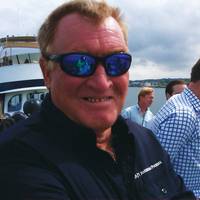
Those MarineNews readers who are not familiar with Bob Kunkel probably should be. That’s because Kunkel, President of Alternative Marine Technologies, previously served as the Federal Chairman of the Short Sea Shipping Cooperative Program under the Maritime Administration and Department of Transportation from 2003 until 2008. He is a past Vice President of the Connecticut Maritime Association, a contributing writer for many maritime and technical trades publications, including Maritime Professional Magazine and MarineNews.
Marine Diesel Purification Breakthrough by SurePure
Liquid photopurification specialist company SurePure Inc. apprises of a breakthrough in the microbiological purification of contaminated marine diesel fuel, using SurePure's technology as an alternative to biocide addition or excessive micro-filtration. SurePure explains that the contamination of diesel fuel is a significant problem for the maritime shipping industry, leading to extensive waste of fuel and environmental contamination. The industry is seeking to improve conventional means by which it cleans fuel where micro-organisms have proliferated. SurePure, in conjunction with a South African oil industry consultant Lemon Tree Holdings, applied its proprietary Turbulator technology in a test conducted in April at Stellenbosch, South Africa.
Fishing Vessels Fit with Wärtsilä’s NOx Reducer
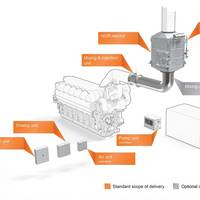
Wärtsilä said its new NOx Reducer will be fitted to two new fishing vessels under construction at the Celiktrans yard in Turkey. The ships are owned by HB Grandi, one of Iceland's largest fishing vessel operators. The company emphasizes environmental sustainability and responsible fishing practices. The order was received during the fourth quarter of 2013 and Wärtsilä's equipment is scheduled for delivery in the second and fourth quarter of 2014. The Wärtsilä NOx Reducer (NOR)…
EBDG LNG Bunker Barge Gains ABS Approval

On February 27, Elliott Bay Design Group (EBDG), a Seattle-based naval architecture and marine engineering firm with offices in New Orleans and Ketchikan, obtained approval in principle (AIP) from the American Bureau of Shipping (ABS) for the design of a 2,000 cubic meter liquefied natural gas (LNG) combination bunkering barge. “At ABS our goal is to help designers, shipyards, and operators bring new and novel concepts to the marketplace in a safe and effective manner,” said ABS Director of Global Gas Solutions Roy Bleiberg.
LNG Fueled Vessels
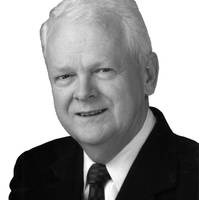
Alternative to Diesel Strengthens as Barriers Continue to Fall. From the earliest days of mechanically propelled ships, fuel use has been evolving. Starting with wood, fuel changed to coal, which held sway for many years. Oil began to be used in the late nineteenth century and was clearly the dominate marine fuel of the twentieth century. Environmental shortcomings of fuel oil, particularly traditional heavy bunkers, were brought under increasing scrutiny as the twentieth century came to a close.
Fuel Filtration System Adds Mobile Access
Beginning shortly, large refiners and importers of marine diesel fuel subject to U.S. EPA (Environmental Protection Agency) regulations must meet their ULSD (ultra low sulfur diesel) fuel standard of 15 ppm sulfur. ULSD standards compliance means decreased emissions for the environment but increased onboard fuel filtration or "polishing" requirements for marine diesel engines. To help handle these requirements KTI Systems now offers boaters a comprehensive range of FilterBOSS marine diesel fuel polishing solutions through their recently re-designed, mobile-friendly and Web 3.0-ready website KtiSystems.com. "Our FilterBOSS Commander Series is a complete marine fuel maintenance solution…
North American Emission Rules for Ships to Enter Force
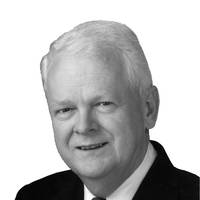
On 1 August 2012, enforcement of the North American Emissions Control Area (ECA) is due to commence. This third and largest ECA (the other two encompass the North Sea and the Baltic Sea areas) was first proposed by Canada and the United States on 27 March 2009. France quickly joined in on behalf of Saint Pierre and Miquelon, its territory off the Atlantic coast of Canada. The proposal was approved by the IMO on 26 March 2010 by means of an amendment to Annex VI (Regulations for Prevention of Air Pollution from Ships) to the MARPOL Convention.
PHA, Maersk $1.5m EPA Grant for Emissions Reduction
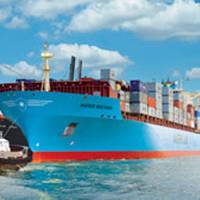
The Port of Houston Authority and Maersk Line, which partnered with the U.S. Environmental Protection Agency (EPA) on the first-ever low-sulfur “fuel switch” demonstration on a container ship in the Gulf of Mexico last November, have been selected to receive a nearly $1.5m grant from the National Clean Diesel Program. Funded by the National Clean Diesel Emissions Reduction Program, the grant will pay the differential costs incurred when Maersk Line vessels switch from high-sulfur bunker fuel to lower-sulfur marine diesel while approaching Texas waters.
Maersk Line Celebrates 5th Anniversary of Fuel Switch
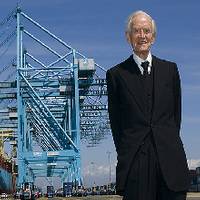
Charlotte, North Carolina (March 31, 2011) – On March 31, 2006, Maersk Line’s SINE MÆRSK changed the course of low-sulfur distillate fuel use when she called Los Angeles. Five years later, this fuel switch has resulted in a 3700 ton savings in air emissions benefitting those who live and work in California. A 4100 ton savings in air emissions has been made in North America with vessels calling California, Tacoma, Seattle, Vancouver and Houston. There has been a 95% reduction of sulfur oxides (SOx)…
ARB Approves "OGV Clean Fuel Regulations"
At a public hearing on June 23, 2011, the Air Resources Board (ARB) approved amendments to the regulations “Fuel Sulfur and Other Operational Requirements for Ocean-Going Vessels within California Waters and 24 Nautical Miles of the California Baseline” (title 13, California Code of Regulations [CCR], section 2299.2, and title 17 California Code of Regulations, section 93118.2). Section 2299.2 is a regulation for ocean-going vessels (OGV) and section 93118.2 is a substantively identical airborne toxic control measure (ATCM). The OGV Clean Fuel Regulations are intended to reduce the public’s exposure to air pollutants from the use of marine diesel fuel in main and auxiliary engines…
Foreign Flagged Ferry for Pacific NW Route
WSF is the world’s largest ferry system based on the number of vehicles carried each year and the third largest in the world based on the 23,000,000 passengers served each year. WSF operates mostly domestic ferry routes in Puget Sound, Washington USA, but also operates a ferry route from Anacortes, Washington to Sidney, B.C. Canada (the “International Route”). WSF is seeking information on the purchase/sale availability of a foreign flagged ferry that WSF would operate on the International Route, contingent upon no intermediate stops in the San Juan Islands or elsewhere in the U.S. Direct sailing time would be approximately two hours one way. • Able to complete two Anacortes, WA – Sidney, B.C. • Sized for American vehicles. WSF standards 18.5’ long/8.5’ wide/8.5’ tall.
Large Marine Engine Standards Finalized
By Vincent J. Foley- New York and Patricia L. "Pat" Goughan- San Francisco, of Holland & Knight. On December 22, 2009, the U.S. Environmental Protection Agency (EPA) announced that it had finalized the new emission and fuel standards for Category 3 marine diesel engines proposed last summer. Because they have been harmonized to the October 2008 amendments to Annex VI of the International Convention for the Prevention of Pollution from Ships (MARPOL), the new standards also will apply to non-U.S. vessels in U.S. waters once the U.S.-Canadian application to the International Maritime Organization (IMO) for an amendment to MARPOL Annex VI is approved. The amendment would designate an area up to 200 nautical miles off the U.S. coast as an emissions control area (ECA).







